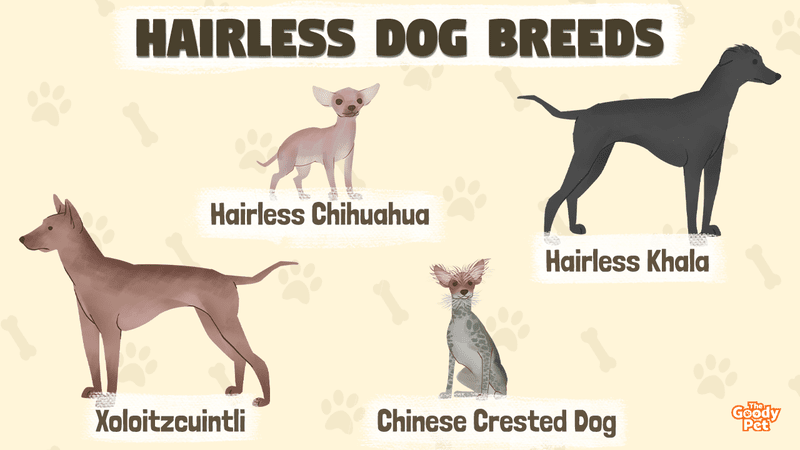Whether you’re a long-time dog lover or just thinking about getting one, you’ll want to check out the latest craze in the canine world: hairless breeds!
While they definitely have a unique look, what’s even more fascinating about these dogs is that they don’t shed fur like other breeds.
From the sleek and shiny Chinese Crested to the wrinkly and adorable Peruvian Inca Orchid, these hairless dogs are fur-free and just waiting for a home to call their own.
So if you’re someone who hates having pet hair all over your clothes and furniture, a hairless breed may be perfect for you. Keep reading to learn more about 11 of the most popular hairless breeds around.
11. Ecuadorian Hairless Dog
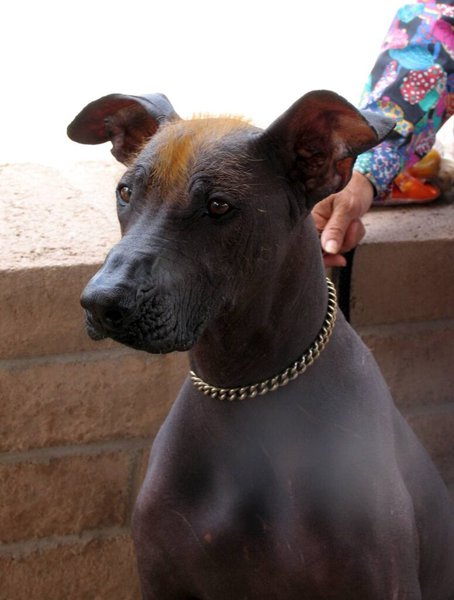
The Ecuadorian Hairless Dog is one of the rarest and most bare-skin dogs. It has long legs and Crepey skin. It is also thought to be a crossbreed of the Peruvian Hairless Dog and the Xoloitzcuintli.
These dogs have scanty remnants of fur on the head and a complete absence of hair on the body. Like other hairless breeds, they are also characterized by the absence of premolar teeth and require special care for skin conditions.
10. Abyssinian Sand Terrier
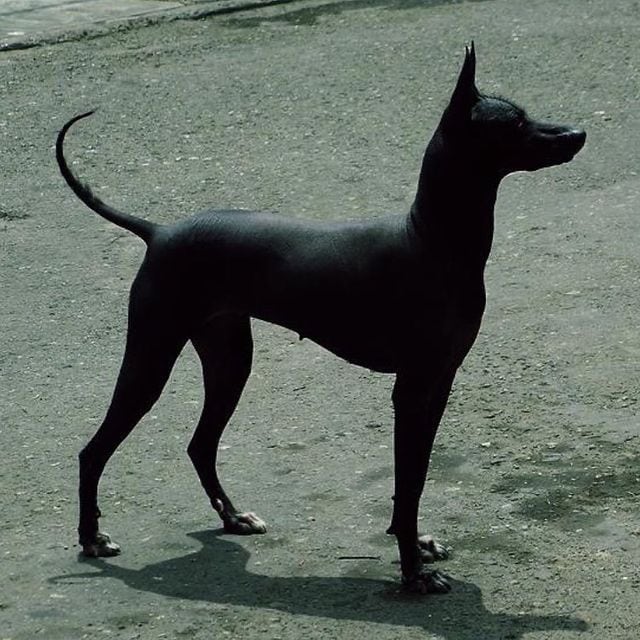
The Abyssinian Sand Terrier is also known as the African Hairless Dog. It’s no longer clear if any of these dogs still exist, but historical evidence suggests they were spread all over the continent and were sometimes called the Egyptian or Zulu dogs.
They have dark-sandy skin and partial or complete pink patches all over the body. Most of them are entirely hairless, while some have a few hairs on their head and tail.
9. American Hairless Terrier
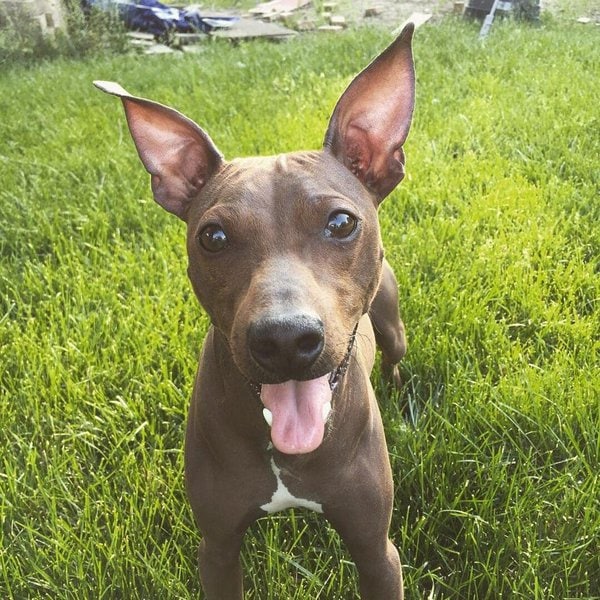
The American Hairless Terrier is a natural deviation of the Rat Terrier, meaning that a hairless puppy was naturally born of a litter of coated Rat Terriers due to natural gene mutation.
The breed is the first Hairless Terrier with US origins, and, unlike other hairless dog breeds, it has normal dental development.
Their skin is susceptible to sunburn and skin allergies. Nonetheless, they have the typical lively personality of terriers and can live up to between 14 to 16 years.
8. Xoloitzcuintli
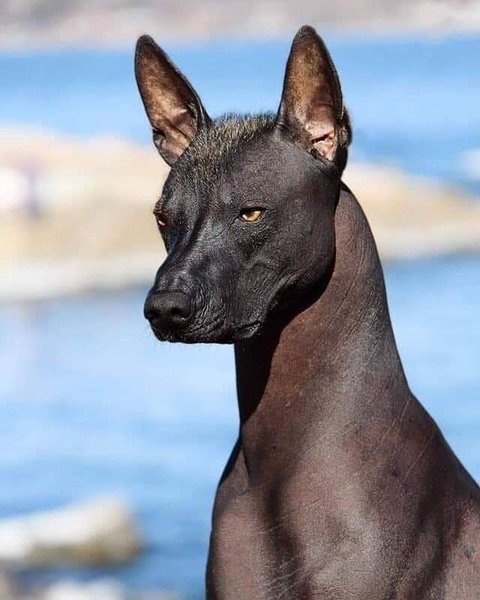
Pronounced as “show-low-itz-queent-lee,” this dog breed is also fondly called Xolo or the Mexican hairless dog. Their name is linked to an ancient dog-headed god of the Aztecs. The dogs were buried with their Aztec owners to lead them to the next world.
Xolos can be coated, but the hairless variation is caused by a gene mutation that is also responsible for absent premolars. Hairless Xolos only have one or two tufts of hair on the head or the tail.
7. Peruvian Inca Orchid
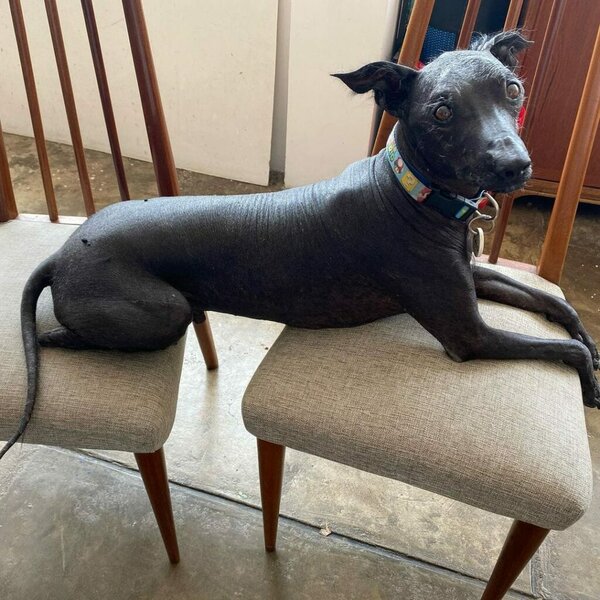
This sighthound was bred in Peru. Their history was largely depicted on Peruvian pottery, linking their ownership with good luck, and their excretions were considered medicinal.
Inca Orchids can be coated or hairless. The hairless type has tiny hair vestiges on the head, feet, and tail. The hairless skin is prone to acne and blackheads but is preferred for easy grooming and for deterring ticks or fleas. A moisturizing cream helps with skin dryness.
6. Argentine Pila Dog
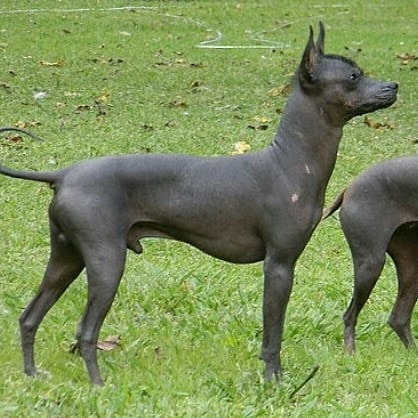
This dog breed has a disputed identity, sometimes said to be the Hairless Khala or the Dogo Argentino. An internet search for the Argentine Pila dog yields plenty of Dogo Argentinos. Despite the breed’s Argentinian origin, it’s closely related to several South American hairless breeds.
The hairless Argentine Pila dog has tufts of hair on the head and tail. Its bare skin is highly prone to allergies and other skin conditions, necessitating extra skincare.
5. Hairless Khala
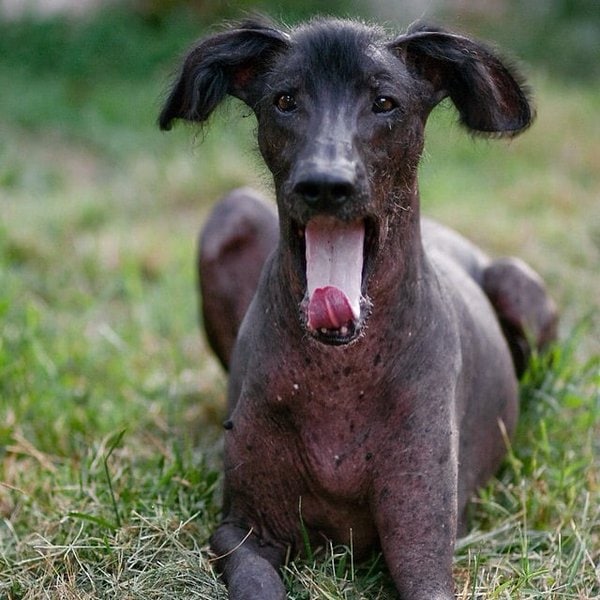
The Hairless Khala is often used as an umbrella term for hairless dogs. Khala means “no clothing” or “without vestment.’ When used to refer to a single breed, the Hairless Khala describes two varieties: the ‘Medio Khala’ with short legs and the ‘Grande Khala’ with longer legs.
Hairless Khalas have some hair on their head. Their bare skin is prone to skin irritations, scaly spots, and bumps that cause itching, often needing a vet’s attention.
4. Jonangi Dog
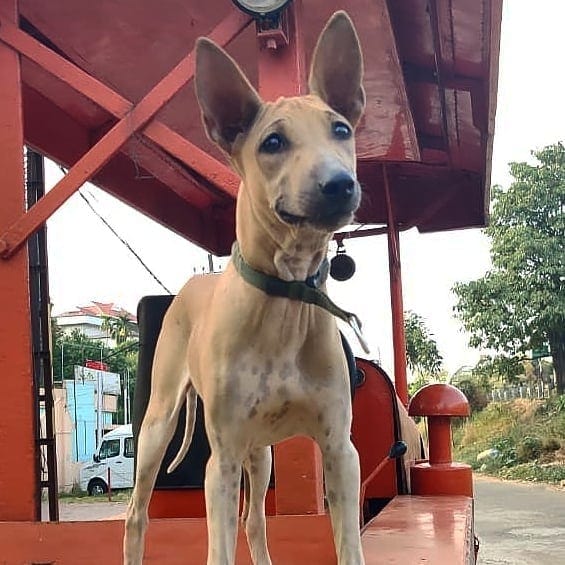
Thought to be another of the rare hairless dogs risking extinction, the Jonangi Dog is originally from India, especially the Andhra Pradesh state. It was bred to hunt ducks and to herd. Some states in India are consciously working to revive the breed’s popularity.
Some say the breed has hair but is extremely short and tight on the skin. Nonetheless, most of them will show bare skin with tufts of hair on the head and pink patches on their fawn or tan skin.
3. Bolivian Hairless Dog
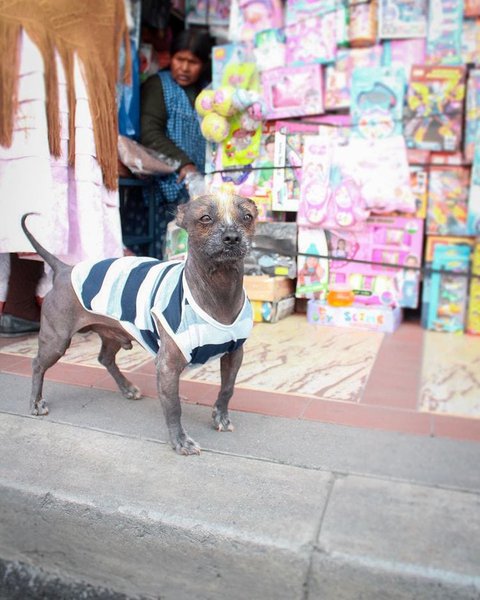
The Bolivian Hairless Dog is another extremely rare dog breed. They are found in South America and are thought to be descendants of the Peruvian Hairless Dog. Like the Hairless Khala, they have the ‘Medio’ (short legs) and the ‘Grande’ (long legs) variations.
They are close in appearance to the Xoloitzcuintli with some tufts of hair on the head or the tail. Even though generally healthy, they are prone to skin problems and shallow dental roots.
2. Chinese Crested Dog
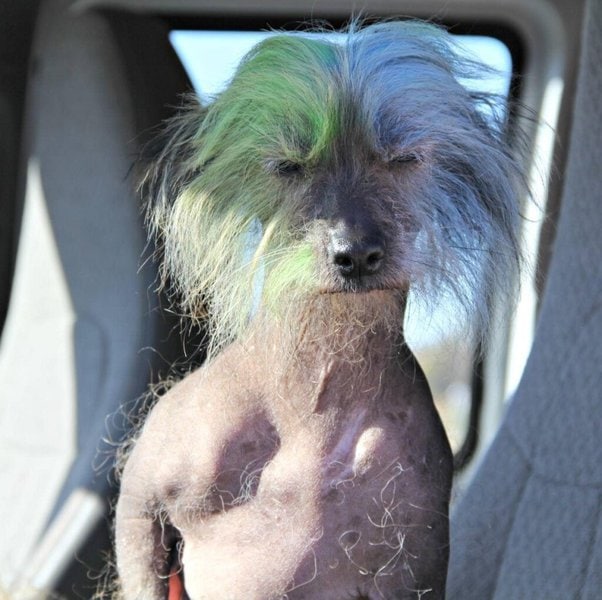
This lively toy dog with Chinese and African roots has a coated and hairless variation. The coated type (“powderpuff”) is covered with a soft silky coat.
The hairless type has soft, smooth skin, but the head, tail, and ankles are covered with clusters of fur, giving the dog a somewhat majestic look.
Because of their bare skin, hairless Chinese Crested often suffer from sunburn, skin allergies, and irritations, requiring extra grooming care.
1. Hairless Chihuahua
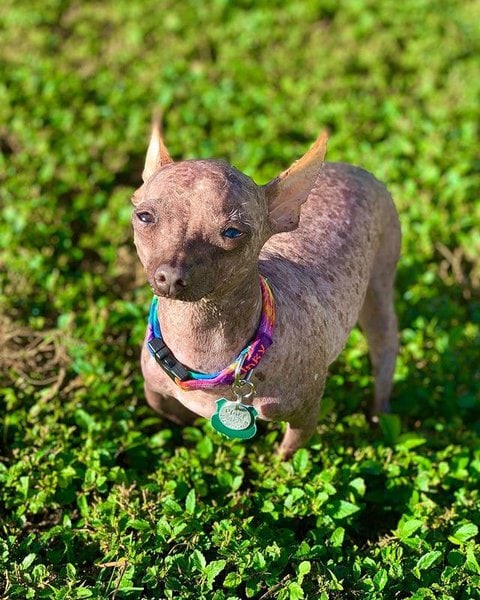
Chihuahua is one of the common and familiar toy dog breeds with variety in size and coat type. The short and long coat variations are quite common, but not the hairless type.
The hairless Chihuahua is often linked to the Xoloitzcuintli or an identified hairless Mexican dog. But this theory is not confirmed.
Like other hairless breeds, the hairless Chihuahua is a genetic defect that occasionally occurs during breeding, which means having a hairless Chihuahua is distinctive.
Related Questions
Do Hairless Dogs Get Cold?
Dog fur has the natural function of regulating heat in the body during both cold and warm seasons. So if a dog is hairless, its body does not perform this function normally. That means hairless dogs will be cold in cold weather, hence needing some form of cold weather gear to keep them warm.
Do Hairless Dogs Smell?
Although they have little or no hair, hairless dogs secret natural oils and salts which will ferment and smell if good grooming is not done. That means a bath twice or thrice a month. Also, hairless dogs with skin conditions will tend to emit odor, especially if the issue is not controlled.
Are Hairless Dogs Really Hairless?
Hairless dogs have the disposition to be hairless or lose hair due to a mutation in a dominant gene or inheriting a recessive hairless gene from both parents. The result is dogs with no hair at all and others with patches of hair or a few whiskers on the head, paws, or tail.

